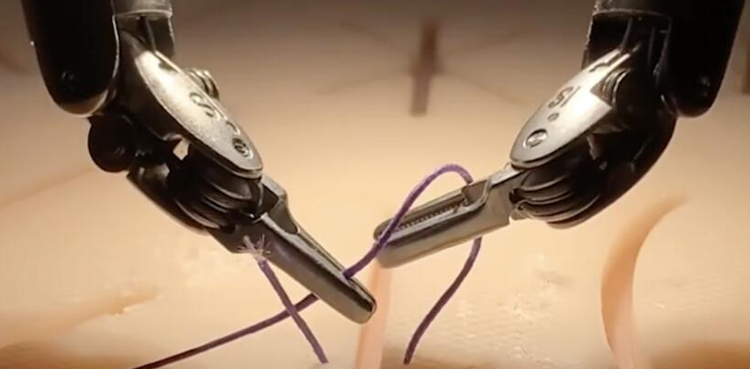
Researchers from Johns Hopkins University have successfully trained a surgical robot using imitation learning, allowing it to perform surgical procedures as skilfully as experienced human surgeons.
This breakthrough eliminates the need to manually program robots for each specific movement during a medical procedure, moving the field of robotic surgery closer to true autonomy. In the future, robots could potentially perform complex surgeries independently.
The research team used imitation learning to teach the da Vinci Surgical System robot three fundamental tasks: handling a needle, lifting tissue, and stitching. By feeding the model hundreds of videos from surgeries performed by human doctors, the robot learned to replicate these tasks with remarkable precision.
Unlike traditional programming methods, which require hand-coding every step of a procedure, this approach enables the robot to learn from demonstration videos, significantly speeding up the process of training.
The key innovation is combining imitation learning with machine learning architecture similar to that of ChatGPT, but instead of processing text, the model works with kinematic data that translates the robot’s movements into mathematical calculations.
This allows the robot to predict the necessary movements based on camera input without needing explicit instructions for every action.
Despite the da Vinci system being widely used, it has been known for its imprecision. The researchers overcame this by training the robot to perform relative movements instead of absolute ones, compensating for the system’s inaccuracies. As a result, the robot could generalize its learning to new environments and situations, even autonomously correcting mistakes like dropping a needle.
This breakthrough could drastically reduce the time required to train surgical robots, enabling them to learn a wide range of procedures in just days. The team is now working to extend this technique to enable robots to perform entire surgeries autonomously, which could reduce medical errors and increase surgical accuracy.
from Science and Technology News - Latest science and technology news https://ift.tt/eDnPqsC


0 Comments